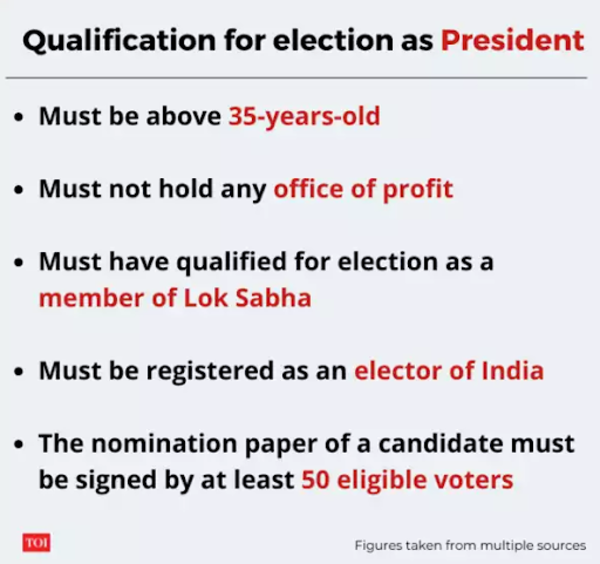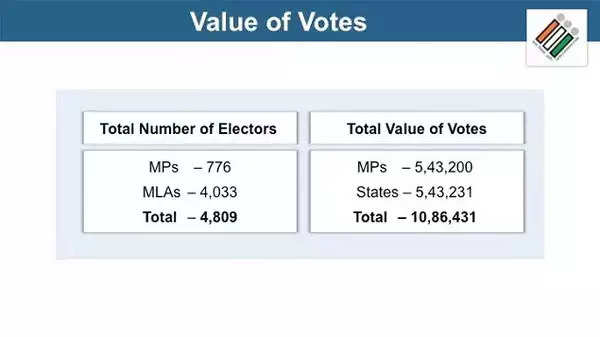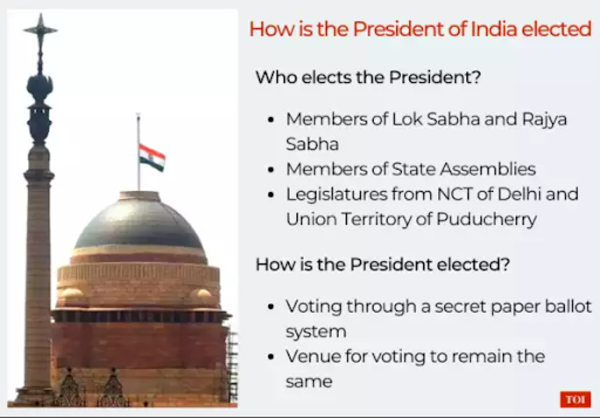The polling will take place in Parliament House and state legislative assemblies between 10 am and 5 pm for which ballot boxes have already reached their destinations.
The counting of votes will take place at Parliament House on July 21 and the next President will take oath on July 25. The term of President Ram Nath Kovind concludes on July 24.
Murmu clear favourite
With the support of regional parties such as BJD, YSRCP, BSP, AIADMK, TDP, JD(S), Shiromani Akali Dal, Shiv Sena and now JMM, Murmu’s vote share is likely to reach nearly two-thirds and she is set to become the first woman from the tribal community to occupy the top constitutional post.
The National Democratic Alliance (NDA) nominee now has over 6.67 lakh votes after the support of various regional parties, out of a total of 10,86,431 votes.
The electoral college which elects the President through the system of proportional representation comprises elected MPs and members of state legislative assemblies. Nominated MPs and MLAs, and members of legislative councils are not entitled to vote in this election.
The system of secret ballot is followed and parties cannot issue whip to their MPs and MLAs with regard to voting.

Value of a vote
The value of the vote of a member of Parliament has gone down to 700 from 708 in this presidential poll due to the absence of a legislative assembly in Jammu and Kashmir.

The value of vote of an MLA varies in different states. In Uttar Pradesh, the value of vote of each MLA stands at 208, followed by 176 in Jharkhand and Tamil Nadu. In Maharashtra, it is 175. In Sikkim, the value of vote per MLA is seven, while it is nine in Nagaland and eight in Mizoram.
Opposition fumbles
Before naming Sinha, a former Union minister and a BJP leader, the opposition camp had approached Gopalkrishna Gandhi, grandson of Mahatma Gandhi and a former governor of West Bengal, NCP chief Sharad Pawar and National Conference leader Farooq Abdullah to contest the poll.
After their refusal to be part of the electoral battle, Sinha, then the Trinamool Congress vice president, was named as the Opposition’s candidate.
Sinha is being backed by the Congress, NCP, Trinamool Congress, Communist Party of India, Communist Party of India (Marxist), Akhilesh Yadav led-Samajwadi Party, National Conference, All India Majlis-e-Ittehadul Muslimeen (AIMIM), Rashtriya Janata Dal and All India United Democratic Front (AIUDF).
The Arvind Kejriwal-led Aam Aadmi Party (AAP) recently said it will also be backing Sinha’s candidacy.
Election procedure
The election of the President is held in accordance with the system of proportional representation by means of single transferable vote.
Every elector can mark as many preferences, as there are candidates contesting the election.
These preferences for the candidates are to be marked by the elector, by placing the figures 1, 2, 3, 4, 5 and so on, against the names of the candidates, in the order of preference, in the space provided in column 2 of the ballot paper.

This is the reason why electronic voting machines are not used in this as well as vice presidential, Rajya Sabha and legislative council polls. The EVMs are based on a technology where they work as aggregator of votes in direct elections such as the Lok Sabha and state assemblies.
According to Election Commission’s directions, while MPs will get a green-coloured ballot paper, the MLAs will get a pink ballot paper to cast vote. Separate colours help the returning officer ascertain the value of vote of each MLA and MP.
Seeking to maintain secrecy of voting, the EC has issued a specially designed pen with violet ink to enable voters mark their ballot papers in the presidential poll.
If Murmu wins
Murmu’s victory will be marked by several firsts. She will be the first President born in Independent India.
At 64, Murmu will also be the youngest occupant of Rashtrapati Bhavan, besides being the first tribal leader to hold the country’s top office.
(With inputs from agencies)

